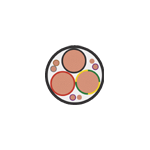7/29 Wire Size in mm – Complete Conversion & Load Chart

For electricians, contractors, and hardware shop owners, understanding the precise specifications of electrical wiring is paramount for ensuring safety, efficiency, and compliance. Among the myriad wire designations, 7/29 wire is a common yet sometimes confusing specification. This comprehensive guide from Life Cables will demystify 7/29 wire, covering its exact size in millimeters, its load capacity, and its versatile applications, equipping you with the knowledge to make informed purchasing decisions.
What is 7/29 Wire? An Essential Overview
The designation “7/29” refers to a type of stranded electrical wire. This nomenclature provides key insights into its construction:
Understanding the Numbers
- The first number (7) indicates that the wire is composed of seven individual strands. This multi-strand design significantly enhances flexibility and strength compared to a solid core wire, making it easier to handle and install, especially in applications requiring bends or movement.
- The second number (29) relates to the thickness or diameter of each individual strand. This is where some ambiguity can arise in common usage and interpretation across different sources:
- Many sources define the “.029” in 7/.029 as the diameter of each strand in inches, meaning 0.029 inches. Converting this to millimeters yields approximately 0.7366 mm. This aligns with other sources stating the individual strand diameter is approximately 0.74 mm.
- However, some sources also state that “29” refers to the AWG (American Wire Gauge) size of each individual strand. According to AWG conversion charts, an AWG 29 wire has a diameter of approximately 0.0113 inches (0.287 mm).
Important Clarification
The interpretation of “.029” as 0.029 inches (0.74 mm) for each strand’s diameter is the one consistent with the commonly cited total cross-sectional area of 2.5 mm² for 7/29 wire. If each strand were truly AWG 29 (0.287 mm diameter), the total area would be significantly smaller (approximately 0.448 mm²), not 2.5 mm². Therefore, for practical purposes and consistency with total cross-sectional area, the 0.029 inch / 0.74 mm strand diameter interpretation is the most relevant for 7/29 wire.
7/29 Wire Size in mm² Explained
For professionals operating in regions using metric units, understanding the 7/29 wire size in mm is critical.
Key Measurements
- Total Cross-Sectional Area: The size of 7/29 wire in millimeters is typically 2.5 mm² (square millimeters) for the conductor. This total area makes it equivalent to a standard 2.5 mm² wire commonly used in metric systems.
- Individual Strand Diameter: As established, each of the seven copper strands has a diameter of approximately 0.74 mm, which is derived from the 0.029 inches specified in imperial designations.
Key Specifications of 7/29 Wire
| Specification | Value |
|---|---|
| Conductor Size (Area) | 2.5 mm² |
| Number of Strands | 7 |
| Single Strand Diameter | ~0.74 mm (or 0.029 inches) |
| Insulation Material | PVC (Polyvinyl Chloride) is common |
| Voltage Rating | 250/440 V is typical |
| Construction | Stranded copper conductor |
Load Capacity & Ampere Rating
The current-carrying capacity (ampacity) of 7/29 wire is a critical factor for safety and performance.
Typical Ampacity
7/29 wire typically has a current-carrying capacity (load capacity) ranging from 15 to 20 amperes. This makes it suitable for various low- to medium-power applications.
Factors Affecting Load Capacity
It’s important to note that the actual load capacity can vary based on several factors, including:
- Ambient temperature
- Installation conditions (e.g., in conduit, open air, bundled wires)
- Wire length
- Insulation type
Safety Considerations
Exceeding the rated ampacity can lead to overheating, insulation failure, potential fire hazards, and short circuits. Always refer to local electrical codes and guidelines to ensure safety and compliance.
Versatile Applications of 7/29 Wire
Thanks to its balance of flexibility, conductivity, and appropriate load capacity, 7/29 wire finds widespread use across various sectors:
Residential Applications
- Lighting circuits, switches, outlets, and low-voltage appliances in homes
- Main wire for individual rooms when connected from the distribution box
- UPS supply wiring
Commercial & Industrial Uses
- Office lighting and powering smaller equipment
- Control systems & robotics for intricate wiring in control panels and automation systems
- Instrumentation and signal transmission for connecting sensors and electronic components
Specialized Applications
- Automotive Applications: Vehicle wiring systems, lighting, ignition, and other low-voltage circuits
- Telecommunication Systems: Telephone lines, data cables, or fiber optic systems
- Solar Panel Installations: Low-voltage solar energy systems for connecting panels, batteries, and inverters
- Power Cables for Low Voltage Applications: Smaller devices and home appliances
Types of 7/29 Wire: Materials & Insulation
7/29 wire is available in different variations, primarily based on its conductor material and insulation.
Conductor Materials
- Copper 7/29 Wire: Most common due to excellent conductivity and flexibility. Widely used across all applications, from home wiring to industrial machinery.
- Aluminum 7/29 Wire: Lighter and more cost-effective but has lower conductivity. Often chosen where weight is a factor or cost is a primary concern.
Insulation Types
- PVC Insulated 7/29 Wire: Polyvinyl Chloride (PVC) protects the wire from environmental damage and is suitable for indoor applications.
- Rubber Insulated 7/29 Wire: Offers excellent durability and resistance to abrasion, making it suitable for harsh conditions or applications involving frequent movement.
How 7/29 Wire Compares to Other Common Sizes
When specifying wire for different loads, it’s helpful to understand how 7/29 compares to other commonly used wire sizes in Pakistan:
| Wire Size | Number of Strands | Typical Single Strand Diameter (mm) | Typical Total Area (mm²) | Current Capacity (Amperes) | Common Applications |
|---|---|---|---|---|---|
| 3/29 | 3 | ~0.74 (from 0.029 inches) | 1.5 | 9-10 | Low-load applications like ceiling lights, holders, bathroom lights, energy savers |
| 7/29 | 7 | ~0.74 (from 0.029 inches) | 2.5 | 15-20 (16-20) | Room mains, UPS supply, AC points, power plugs, main circuits from DB to rooms |
| 7/36 | 7 | ~0.91 (from 0.036 inches) | 4 | 27-30 | Heavy-load circuits like AC units, water heaters, ovens, heavy appliances, main circuits |
| 7/44 | 7 | ~1.12 (from 0.044 inches) | Not specified, heavier | 48 | Main supply from meter (WAPDA use), large commercial setups |
Why Wire Size Matters
Opting for the correct wire size is crucial for safety and preventing issues like overheating, short circuits, and damage to appliances or even the wire itself. Using an undersized wire for heavy loads will lead to overheating and potential hazards, while oversizing can unnecessarily increase cost.
Choosing the Right Wire: Important Considerations
Selecting the appropriate wire for your project goes beyond just size. Here are key considerations for electricians, contractors, and hardware shop owners:
Essential Guidelines
- Always Refer to Local Electrical Codes: Electrical codes and guidelines exist to ensure safety and compliance. It is essential to refer to these when selecting and installing wires.
- Match Original Wire Specifications: When replacing existing wiring, it is crucial to match the original wire’s specifications precisely to avoid potential hazards.
- Consider Insulation Material: Different types of 7/29 wire are available with various insulation materials like PVC or rubber. The choice of insulation affects the wire’s suitability for specific environments and conditions.
- Confirm Wire Size Accurately: A standard round gauge tool is commonly used to measure wire size. Strip the wire and fit it into the numbered grooves. The correct size should fit snugly but allow the wire to pass through for removal.
Price & Availability of 7/29 Wire in Pakistan
The price of 7/29 wire in Pakistan can vary depending on several factors:
Price Influencing Factors
- Conductor Material: Copper wire is generally more expensive than aluminum due to its superior conductivity
- Insulation Type: PVC and rubber insulation types can influence the cost
- Manufacturer: Different manufacturers offer varying price points based on brand reputation and quality
- Quantity Purchased: Bulk purchases often come with discounted rates
Life Cables is committed to providing high-quality 7/29 copper wire that meets industry standards, ensuring durability and performance for your projects. We maintain a focus on offering competitive pricing for professionals like you.
Need to Buy 7/29 Wire for Your Next Project?
Life Cables offers reliable, high-quality 7/29 wire designed to meet the demands of residential, commercial, and industrial applications.
Get Your Quote Today!
Get Today’s Price on WhatsApp! +923328153200
Looking for a Custom Quote? Contact us today to discuss your specific requirements and get a competitive offer for bulk orders or specialized projects.
Frequently Asked Questions (FAQ) about 7/29 Wire
Q1: What does 7/29 wire mean?
A: 7/29 wire means it’s a stranded wire composed of 7 individual strands. The “29” typically refers to the diameter of each strand as 0.029 inches, or in some contexts, it can indicate that each strand is 29 AWG. For practical application, the interpretation of each strand having a diameter of approximately 0.74 mm (derived from 0.029 inches) is consistent with the wire’s overall 2.5 mm² cross-sectional area.
Q2: How many mm is a 7/29 wire?
A: The total cross-sectional area of a 7/29 wire is typically 2.5 mm² (square millimeters). Each individual strand has a diameter of approximately 0.74 mm.
Q3: What is the load capacity of 7/29 wire?
A: The 7/29 wire typically has a current-carrying capacity (ampacity) ranging from 15 to 20 amperes. This capacity can vary based on factors like ambient temperature, installation conditions, and wire length.
Q4: What are the common uses of 7/29 wire?
A: 7/29 wire is widely used in residential wiring for lighting, switches, outlets, and UPS supply. It’s also common in commercial wiring, automotive applications, control systems, robotics, telecommunications, low-voltage power cables, and instrumentation/signal transmission.
Q5: What is the difference between a 7/0.29 and a 2.5mm wire?
A: A 7/0.29 wire (where 0.29 is understood as 0.029 inches) is an imperial cable consisting of 7 strands, each with a diameter of 0.029 inches (~0.74 mm). A 2.5mm² wire (often referred to as 2.5mm wire) refers to a cable with a total conductor cross-sectional area of 2.5 square millimeters. In many contexts, 7/0.29 wire is considered the imperial equivalent of a 2.5mm² wire, as they have similar total cross-sectional areas and current-carrying capacities.
Q6: How can I confirm the wire size?
A: The most common tool for measuring wire size is a standard round gauge tool. To use it, strip the wire and try to fit it into the numbered grooves. The correct size groove should just fit the wire, allowing it to pass through to the hole for removal. The corresponding number will be the wire’s gauge size. You can also use a wire gauge size chart to identify diameters in inches or millimeters.
Q7: What is AWG 29 wire diameter in mm?
A: An AWG 29 wire has a diameter of approximately 0.0113 inches (0.287 mm). While “29” in “7/29” is sometimes referred to as AWG size, the actual diameter of strands in a typical 7/29 wire (0.74 mm) is larger than that of a single AWG 29 wire to achieve the 2.5 mm² total cross-section.
Q8: What is the price of 7/29 wire in Pakistan?
A: The price of 7/29 wire in Pakistan can vary. Factors influencing the price include the material (copper or aluminum), insulation type (PVC, rubber), the manufacturer, and the quantity being purchased. For specific and up-to-date pricing, it’s best to contact suppliers directly, like Life Cables.
Conclusion
Understanding 7/29 wire—from its 2.5 mm² size and 7-strand construction to its 15-20 ampere load capacity and diverse applications—is essential for any professional in the electrical industry. By grasping these specifications, you ensure the safety, efficiency, and longevity of your electrical installations. Life Cables is your trusted partner for high-quality, reliable wiring solutions that meet the strictest standards.
Think of choosing the right wire size like building a bridge: you need to know the weight of the traffic it will bear to select the right materials and support structure. An undersized wire is like a bridge too weak for its load, leading to immediate failure, while an oversized one is a waste of resources. With the right knowledge of 7/29 wire, you can confidently build robust and safe electrical pathways.
Contact Life Cables Today Get expert advice and premium quality 7/29 wire for your next project
For the most current pricing and technical specifications, please contact Life Cables directly.




